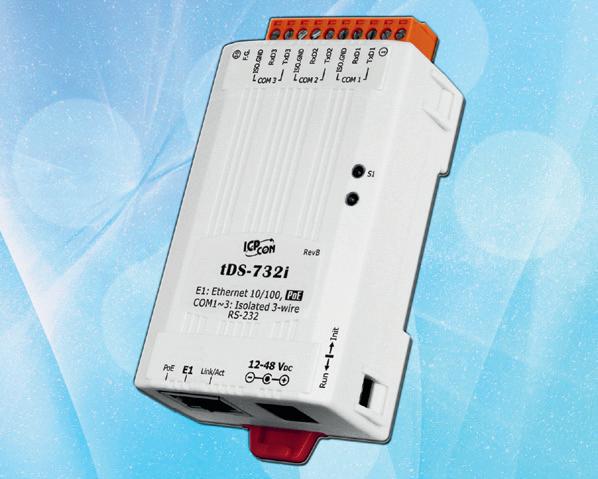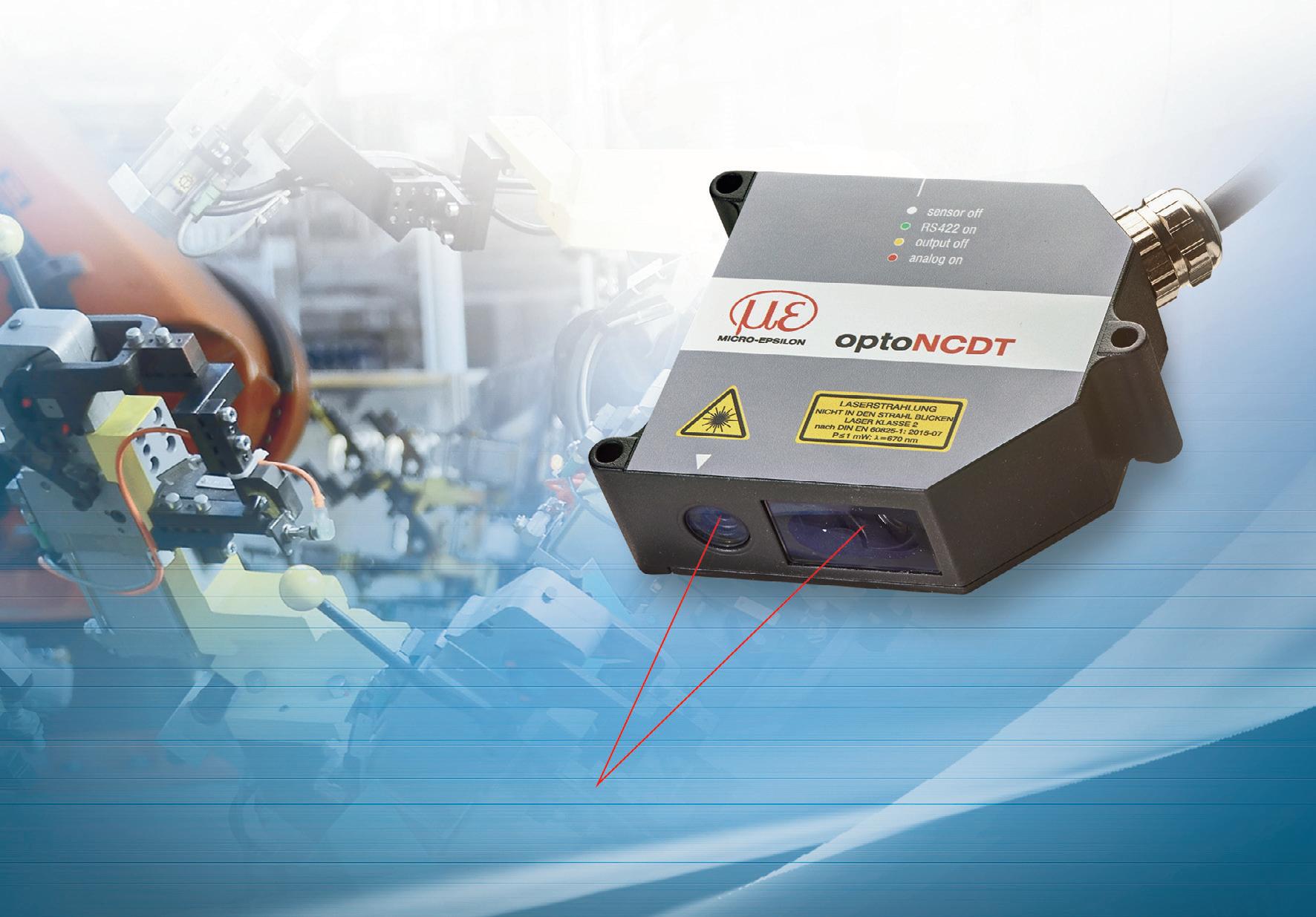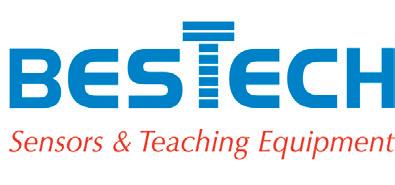
13 minute read
Moving from the lab to the process
A fundamental shift is occurring in heavy industry, with a focus on bringing lab data into the process, incorporating real-time information and online measurement. As ore grades decline and extraction becomes increasingly difficult, continuous processing optimisation becomes not only a ‘nice to have’, but a ‘must have’ for operations to become profitable, particularly with the current challenging global situation.
With various innovations such as digital twins, AI and other Industry 4.0 tools for the optimisation of processes available, there is a plethora of cutting-edge systems that can optimise operations beyond anything we have witnessed before. It makes sense that with faster, more detailed information about the process, coupled with raw material feed characteristics available in real time, effective automation can be implemented.
We have seen a small number of mining or oil and gas sites embrace this mind-shift transformation and generate excellent ROI on their initial investment. These novel optimisation systems are very effective when implemented correctly; however, there is a catch: these are only value multiplier systems and can only deliver value if there is informative and integral baseline process data. Without accurate and reliable lab data, most operators would agree it would be like running blind — it’s only a matter of time before you run into something.
Innovative instrumentation businesses have identified this gap in the market and invested a significant proportion of R&D expenditure into bringing additional quality parameters to be available in real time for operators. These days, instrumentation suppliers have managed to gain additional process-related data from existing devices; for example, a Coriolis meter when first manufactured in the 1970s could only determine mass flow. Now, there are some models that can determine physical fluid properties in addition to mass flow, such as viscosity, density, temperature, concentration, volume flow, pipe build-up and abrasion/corrosion. Not you can now get several variables from a single instrument. This additional information, coupled with big data analytics, can bring huge value to previously optimised processes.
In addition to an expansion of information available from traditional instrumentation, there are also new types of inline instruments available on the market to deliver critical process insights that would normally be derived from lab testing. This family of instrumentation includes gas analysers for industrial processes (particularly the oil and gas industry), liquid analytical devices and other field quality measurement devices that really bring lab capability into the heavy industrial environment. Not only do these novel instruments minimise complexity and reduce capital cost in gaining information from the process, but they can also deliver additional process information in real time — a real game changer for process optimisation.
Traditionally lab measurements have had the disadvantage of being slow and unreliable (transportation of samples, time taken to analyse sample and then manual data entry into control system). Continuing with these lab measurements continues to expose operations to unnecessary hazards, with lab technicians being in the field conducting manual handling of samples,
© Stock.Adobe.com/au/metamorworks
analysing samples that could involve high temperatures and harsh chemicals. Elimination of these hazards and a reduction of labour costs by implementing instrumentation have delivered operations tangible benefits while conducting brownfield and greenfield projects.
The untapped value from optimising processes with additional online data previously only available from the lab is enormous. On one iron ore site, a great example of this was the utilisation of new, reliable technology such as an online moisture sensor. Mines normally sell their final ore product to customers at a specific moisture, with contract penalties imposed for all shipments above the quality parameters for moisture. If the operation delivers final ore product significantly below the quality moisture specification, the operation could miss out on that proportion of revenue. For example, the ore has a higher moisture limit of 9%, and in order to stay under the limit, typical shipments are exported at around 7% moisture. A 1% increase of moisture in the final product would not trigger any penalties from the customer; however, it would increase revenue by 0.7%. For an operation producing 10 Mtpa, that translates into a large revenue increase (in this example, over $8 million). This revenue increase stems from an improvement of online measurement being incorporated into the process control philosophy of the processing plant.
Bringing process data into your operation can bring your site into a safer, more profitable and efficient future — a direction that all shareholders would like to see their assets move towards. These online instruments are a catalyst for effective AI and other digital tools to really bring value to operations.
Taylor McKertich is the Industry Manager for Mining, Metals, Oil and Gas with Endress+Hauser Australia. He has extensive experience in the mining processing sector, focusing on process improvement, digitalisation, innovation, operational excellence and engineering process improvement solutions.

Additive manufacturing of multifunctional parts
Additive manufacturing is currently one of the most significant trends in industry. Now a team from the Fraunhofer Institute for Ceramic Technologies and Systems IKTS has developed a Multi Material Jetting system that allows different materials to be combined into a single additively manufactured part. This makes it possible to create products with combined properties or functions. The new system can be used with particularly high-performance materials such as ceramics and metal.
Additive manufacturing technologies such as 3D printing involve building up a desired product layer by layer instead of producing it from a single piece. This enables high-precision, custom manufacturing with precisely defined product characteristics — and the technology is continuously being improved. Although the early years of additive manufacturing were dominated by polymers, this expanded some time ago to include metals and ceramic-based materials.
Fraunhofer IKTS has now taken another major step forward. Researchers have developed a system that enables additive manufacturing of multi-material parts based on thermoplastic binder systems. Known as Multi Material Jetting, or MMJ, this process combines different materials and their various different properties into a single product.
“Right now, we can process up to four different materials at a time,” said Uwe Scheithauer, a researcher at Fraunhofer IKTS. This opens the door to a diverse range of applications, allowing companies to produce highly integrated multifunctional components with individually defined properties.
The new system fabricates parts in a continuous process. In the first step, the ceramic or metal powder from which the part will be made is distributed homogenously in a thermoplastic binder substance. The slurries produced in this way are loaded into micro-dosing systems (MDS) in order to commence the actual manufacturing process. These slurries are melted in the MDS at a temperature of around 100°C, creating a substance that can be released in very small droplets. The IKTS researchers also developed a corresponding software program to ensure precise positioning of the droplets during manufacturing.
The micro-dosing systems operate in a high-precision, computer-controlled process, depositing the droplets one by one in exactly the right spot. This gradually builds up the part drop by drop at rates of up to 60 mm and 1000 drops per second. The system works with droplet sizes of between 300 and 1000 µm, creating deposited layers with heights of between 100 and 200 µm. The maximum size of parts that can currently be manufactured is 20 x 20 x 18 cm.
“The critical factor here is the custom dosing of the metal or ceramic slurries,” Scheithauer said. “Getting the dosing right is key to ensuring that the additively manufactured final product takes on the required properties and functions during subsequent
© Stock.Adobe.com/au/mari1408

sintering in the furnace, including properties such as strength, thermal conductivity and electrical conductivity.”
The new IKTS system can be used to make highly complex parts such as the ignition system in a satellite propulsion engine made of ceramics. Satellite engine combustion chambers reach extremely high temperatures, so the ability of ceramics to withstand heat makes them an ideal choice of material. MMJ can be used to produce an ignition system that is directly integrated within the engine. This ignition system combines electrically conductive and insulating areas in a single, extremely robust component. In this case, the MMJ process requires three dosing systems: one for a support material that disintegrates during heat treatment in the furnace, a second for the electrically conductive component and a third for the electrically insulating component. MMJ also has plenty of conceivable applications in the consumer products market — for example, a two-tone ceramic watch bezel made for an individual customer as a one-off item.
Thanks to its high precision and flexibility, the MMJ system is suitable for more than just manufacturing multifunctional components.
“We could also use it to make blanks for carbide parts, for example,” Scheithauer said. “Thanks to the tremendous precision of the dosing systems, the contours of the blanks would already be very close to those of the end product. They would therefore require very little subsequent grinding as compared to conventional methods. That’s a big advantage when you are working with carbide.”
The project at Fraunhofer IKTS has demonstrated that the technology also works in practice and is scalable. The next step is to validate the technology for industrial use. As well as supplying the hardware, Fraunhofer IKTS can also help industrial customers develop the materials and software required for process monitoring and automation. Customers can therefore get everything from a single source, all tailored to their specific requirements.
EDGE CONTROLLER SOFTWARE UPDATE Red Lion has released version 3.2 of its Crimson software to complement its FlexEdge platform, which includes the DA50 and DA70. This fusion technology enables a single FlexEdge controller to provide advanced networking, security and automation. By integrating information technology and operational technology, FlexEdge is designed to help reduce costs, improve data security and increase productivity.
As part of the update, advanced network capabilities including routing, VLAN support, VPN client/server and certificate management features have been added. In addition, the symbol library and primitives have expanded for creative interface design such as antialiased rendering.
Users can securely monitor and control applications from a remote location using the Crimson 3.2 enhanced web server, with its mobile responsive design, a full-screen display option ideal for tablet or mobile display, HTTPS operation with the provision of certificates, HTTP redirect, CSS and JavaScript support. In addition, Crimson 3.2 now also supports a system-based web server for real-time system configuration and management.
Support for over 300 protocols, including Modbus RTU, TCP/IP, EtherNet/IP, Emerson ROC, and both DNP3 serial and Ethernet communications, is also available.
Control Logic Pty Ltd
www.controllogic.com.au

RS-232 DEVICE SERVER The ICP DAS tDS-732i tiny device server is a serial-to-Ethernet device server that is designed to add Ethernet and internet connectivity to any RS-232 device, and to eliminate the cable length limitation of legacy serial communication technology. By using the VxComm driver/utility, the built-in COM port of the tDS-732i can be virtualised to a standard PC COM port in Windows. Most serial devices do not have network ports; tDS-732i allows those devices to connect to the network. Therefore, users can transparently access or monitor serial devices over Ethernet without software modification.
The product offers true IEEE 802.3af-compliant (classification, Class 1) Power over Ethernet (PoE) functionality using a standard category 5 Ethernet cable to receive power from a PoE switch. It also accept power input from a DC adapter. The tiny device server adds 3000 VDC isolation and ±4 kV ESD protection that diverts potentially damaging charge away from sensitive circuits to protect connected modules and equipment.
ICP Electronics Australia Pty Ltd
www.icp-australia.com.au

MOBILE BAG DUMP STATION The latest mobile bag dump station from Flexicon Corporation incorporates a flexible screw conveyor and bag compactor and allows bulk material transfer from handheld sacks, pails and boxes into elevated process equipment and storage vessels throughout the plant.
Mounted on a mobile frame with locking castors and folddown step, the dust-free system features a bag disposal chute through the sidewall of the hopper hood, allowing the operator to pass empty bags directly into the bag compactor. Dust generated from bag dumping, empty bag pass-through and bag compaction is drawn away from the operator, onto the system’s two cartridge filters. Automatic reverse-pulse air nozzles release short blasts of compressed air inside the filters at timed intervals causing dust build-up on the outer surfaces to fall into the hopper, conserving usable product. Filters are readily accessed by removing the interior baffle, and replaced using quick-disconnect fittings.
The compactor employs a pneumatic air cylinder capable of compressing up to 80 bags into a removable bin. The compactor’s main door and flapper door within the bag disposal chute are equipped with safety interlocks that prevent operation of the compactor unless both doors are closed.
The hopper discharges into an enclosed flexible screw conveyor, capable of moving free-flowing and non-free-flowing bulk materials from large pellets to sub-micron powders, including products that pack, cake, seize, smear, fluidise, break apart or separate, with no separation of blended products.
Flexicon Corporation (Aust) Pty Ltd
www.flexicon.com.au

QUALITY CONTROL OF VENEER STRIPS WITH A LASER TRIANGULATION SENSOR

Veneer strips are thin sheets of wood of about 1 mm thickness or less that are manufactured by cutting laminated woods with cutter disks. They are generally used to produce flat panels such as doors, tops, and panels. The strips can also be further utilised for assembling parts of furniture, cabinets, and drawers. These sheets are obtained by slicing large rectangular blocks of wood or peeling the trunk of a tree. Thereafter, they are glued together to form layers over a thick core. After this transformation, they become highly stable and less prone to splitting and cracking than solid wood.
The finished products should be thoroughly checked to make sure the thickness of the strips does not exceed 1 mm as per industry specifications. They can only tolerate marginal error in the micrometre range. Furthermore, they are checked for any inconsistent thickness or splinters that can cause the furniture to delaminate or peel back at edges. Therefore, reliable sensing and detection technology must accurately measure the sheets’ dimensions to ensure that they meet the production standards.
Laser triangulation as a solution
Offering fast, wear-free measurement capability with precision, a laser triangulation sensor is widely used for measuring thickness and dimensions in industrial applications. Laser sensors have a compact design that allows easy integration into industrial machinery. The sensors can therefore be installed into cutter disks easily.
The optoNCDT 2300 laser triangulation sensor from Micro-Epsilon is used in the post-processing stage to check the quality and dimensions of wood veneer. This depends on the precision of the cutting disk used for slicing the laminated wood. The laser is positioned in such a way to measure and monitor the radial deviation of the cutting disks. The cutting disk is fitted with 24 blades, has a 3200 mm diameter, and rotates at approximately 180 to 210 rpm.
The optoNCDT 2300 laser displacement sensor is capable of generating constant and reliable measurement results under challenging conditions. This is due to its ability to offer highspeed measurements and perform reliably with changing and challenging surfaces. The optoNCDT2300 sensor has the feature to rapidly compensate for changing surface during continuous exposure in real-time, which means sudden change of surface will not show erroneous data.
The laser sensor comes with a protective housing to protect the laser from shadows that can impair the measurement. As a result, the formation of dust and wood chips also has a negligible effect on the measurement accuracy. The strongly reflecting surface of the cutting disk and the high-speed operation also doesn’t affect the measurement process. This is because the sensor is integrated with a high-performing optical system to generate precise measurements under rough and challenging conditions.
The sensor can also be connected to a PC via a serial interface. This enables measurement to directly transfer results to the connected PC to post-process the measured values and signals. The intuitive, easy-to-operate web interface allows the users to configure and set pre-measurement settings easily.
The optoNCDT 2300 laser triangulation sensor exhibits high resolution and fast-measuring capability. It is suitable for this type of measurement application as it can offer precise measurement with a sub-micrometre resolution. It can also measure at a speed of up to 49 kHz to suit dynamic applications.





